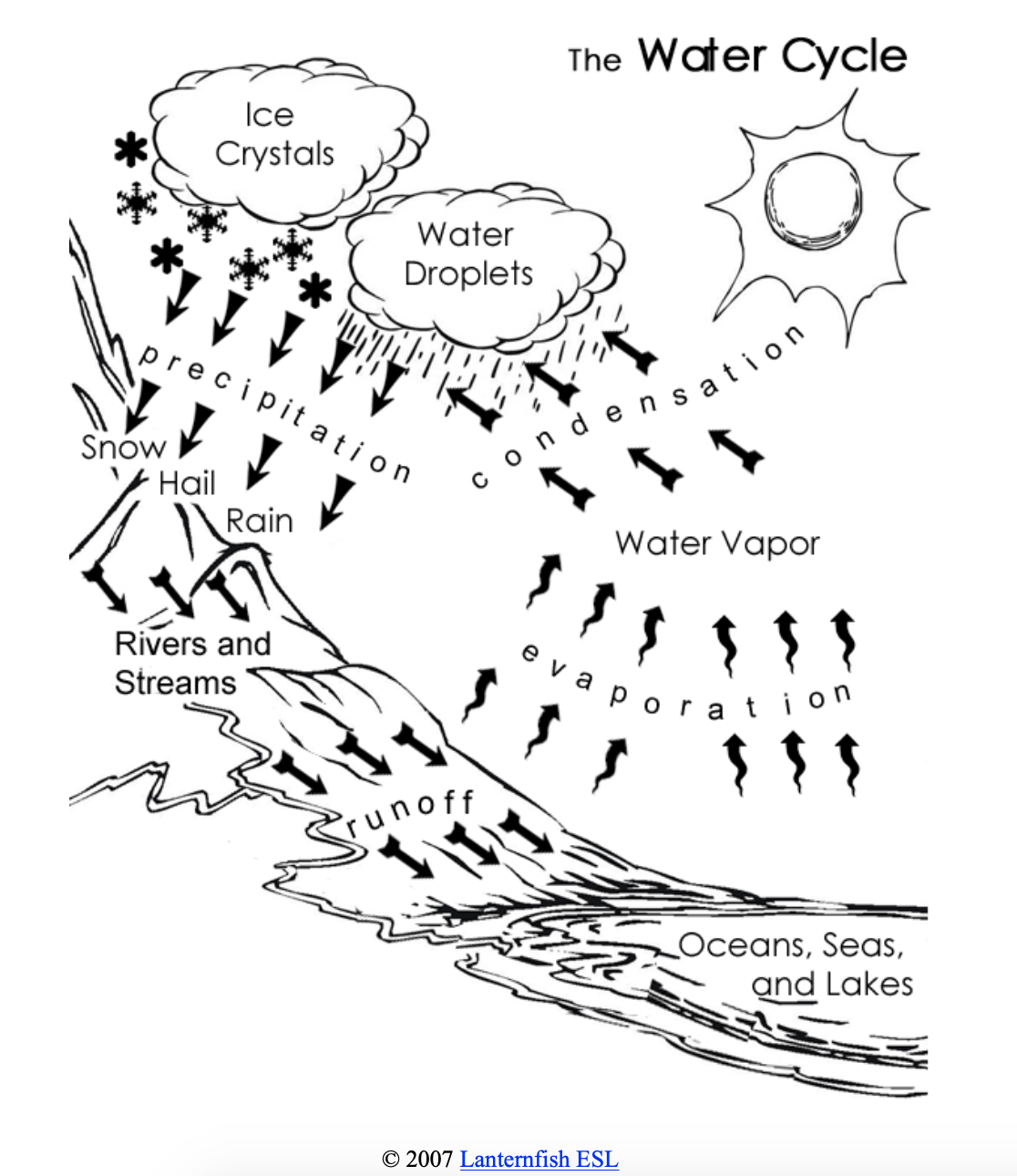Term 3 - Week 2
Section outline
-
Learning Outcomes
Determine whether water that flows into our reservoirs is clean enough to drink without treatment.
Success Criteria:
1) Explain the process of the water cycle, using the terms evaporation, transpiration, condensation precipitation, runoff, infiltration
2) Explain why all waterways need to be clean.
3) Research and describe how to conduct one type of water quality test and its significance.
4) Carry out at least one chemical water test and describe the findings in terms of water quality.
Activities:
1) Make an active water cycle.

2) Watch a video on the importance of having clean drinking water. Describe why we need healthy waterways. Identify what impacts do that have on the environment. How can we determine if water is healthy?
3) Assigned partners will spend time researching one type of water quality test. Present information on ONE slide. What to include: how to carry out the test (video is fine), what the test is used for, how the results are reported, how do we know if the results are good or bad
4) Practice sampling water collected from the Hunua Ranges.
5) Collect water samples from Point View Reserve.
EXPLORE / TŪHURA learning intentions:
- We are EXPLORING...how the earth's surface forms bodies of water by analysing topographical maps
- We are EXPLORING...water quality by classifying macro-invertebrates, collecting and calculating data, and observing different bodies of water
-
This folder contains activities you can work on:
- water cycle crossword
- literacy activity
- practical activities
